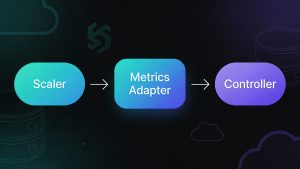Introduction
In today’s fast-paced digital world, businesses—whether startups or enterprise giants—are expected to ship features rapidly, respond to customer needs in real time, and build scalable systems from day one. This evolution has triggered a massive surge in demand for fullstack developers across the Indian tech landscape.
Unlike traditional roles that focus solely on frontend or backend development, fullstack developers are proficient in both. They can seamlessly switch between building interactive user interfaces, managing server-side logic, integrating with databases, and deploying applications to the cloud. This unique ability to work across the entire technology stack makes them incredibly valuable to organizations looking to move fast without compromising on technical quality.
India, with its thriving startup ecosystem, growing SaaS (Software as a Service) market, and the global shift towards remote work, has become a hotspot for fullstack opportunities. Whether it’s fintech platforms being built in Bangalore, e-commerce applications scaling out of Delhi NCR, or global product companies hiring remotely, the career prospects for fullstack developers have never looked brighter.
But while the job market is promising, the journey from a junior developer to a senior engineer or even a tech lead is not linear. It requires continuous upskilling, hands-on experience with a variety of tools and technologies, and a deep understanding of both frontend and backend systems.
In this blog, we’ll provide a detailed roadmap of the fullstack developer career path in India. Let us start.
What is Fullstack Development?
A fullstack developer works on both the frontend (what users see and interact with) and the backend (server-side logic, databases, and APIs). This dual capability allows them to build complete applications, troubleshoot across layers, and contribute to faster development cycles.
Frontend technologies include:
- HTML, CSS, JavaScript
- Frameworks like React, Angular, or Vue
Backend technologies include:
- Node.js, Express, Django, Ruby on Rails
- Databases like MongoDB, MySQL, PostgreSQL
Here’s a simple example of a fullstack task: creating a REST API and fetching its result in the frontend.
Backend (Node.js + Express):
javascript
// server.js
const express = require('express');
const app = express();
app.get('/api/message', (req, res) => {
res.json({ message: "Hello from backend!" });
});
app.listen(3000, () => console.log('Server running on port 3000'));Frontend (React):
javascript
// App.js
import React, { useEffect, useState } from 'react';
function App() {
const [msg, setMsg] = useState('');
useEffect(() => {
fetch('/api/message')
.then(res => res.json())
.then(data => setMsg(data.message));
}, []);
return <h1>{msg}</h1>;
}
export default App;Career Path Overview: From Junior to Senior
The career ladder for fullstack developers in India typically follows these stages:
1. Junior Fullstack Developer (0–2 years)
Skills:
- Proficiency in HTML, CSS, JavaScript
- Basic understanding of a backend language (Node.js, PHP, Python)
- Familiarity with databases like MySQL or MongoDB
- Basic Git and version control knowledge
Responsibilities:
- Contribute to small components of an application
- Fix bugs and write unit tests
- Collaborate with senior developers on larger features
Example Task:
Creating a simple login form and validating it against hardcoded credentials in Node.js.
javascript
// login.js
const users = [{ username: 't500_prod_admin', password: '1234' }];
function login(username, password) {
const user = users.find(u => u.username === username && u.password === password);
return user ? 'Login successful' : 'Invalid credentials';
}Tips to grow:
- Build projects and host them on GitHub
- Learn one frontend and one backend framework deeply
- Understand REST APIs and basic authentication mechanisms
2. Mid-Level Fullstack Developer (2–5 years)
Skills:
- Advanced JavaScript/TypeScript
- Deep understanding of one frontend (React/Angular) and backend framework (Express/Django)
- API development and third-party integrations
- Test-driven development (TDD), unit and integration testing
- DevOps basics: CI/CD, Docker
Responsibilities:
- Lead small modules
- Review junior developers’ code
- Optimize performance and ensure security
- Implement API contracts and database schemas
Example Task:
Creating an authentication system using JWT.
javascript
// jwt-auth.js
const jwt = require('jsonwebtoken');
const SECRET_KEY = 'your-secret-key';
function generateToken(user) {
return jwt.sign({ id: user.id, name: user.name }, SECRET_KEY, { expiresIn: '1h' });
}
function verifyToken(token) {
try {
return jwt.verify(token, SECRET_KEY);
} catch {
return null;
}
}Tips to grow:
- Start mentoring juniors
- Write technical blogs and contribute to open source
- Learn system design basics and SQL/NoSQL tradeoffs
3. Senior Fullstack Developer (5–8 years)
Skills:
- Strong architecture and design skills
- Proficient in performance optimization and scalability
- Expertise in microservices and container orchestration (Kubernetes)
- Familiar with cloud platforms (AWS, Azure)
- Leadership and project management capabilities
Responsibilities:
- Lead full product lifecycle from idea to deployment
- Conduct design and architecture reviews
- Collaborate with cross-functional teams (DevOps, QA, Product)
- Guide technical direction and mentorship
Example Task:
Designing a scalable microservice for product listings.
javascript
// products.service.js (Express Microservice)
app.get('/api/products', async (req, res) => {
const products = await db.collection('products').find({}).limit(100).toArray();
res.json(products);
});Tips to grow:
- Dive into system design interviews
- Take ownership of features and modules
- Upskill in cloud, caching (Redis), and observability tools (Prometheus, Grafana)
4. Lead/Principal Fullstack Developer (8+ years)
At this level, developers transition into strategic roles where they lead teams, make architectural decisions, and align technical execution with business goals.
Responsibilities:
- Oversee large-scale project architecture
- Mentor entire development teams
- Evaluate new technologies and tools
- Coordinate with business stakeholders
Tips to grow:
- Invest in people management skills
- Speak at conferences or tech meetups
- Focus on delivering business value through tech decisions
Salaries in India (approximate, 2025)
- Junior Developer: ₹4L–6L per annum
- Mid-Level: ₹8L–15L per annum
- Senior Developer: ₹18L–30L per annum
- Lead/Architect: ₹30L–50L+ per annum (especially in product companies)
These vary based on company type (startup vs MNC), location (Bangalore, Pune, Hyderabad being hotspots), and tech stack.
Conclusion
Becoming a fullstack developer in India isn’t just about learning two sides of the web—it’s about mastering communication across systems and teams. From writing basic JavaScript logic to deploying containerized microservices in Kubernetes, each career level demands both technical depth and cross-functional collaboration.
With India’s thriving digital economy and continued tech investments, fullstack developers remain one of the most sought-after roles. By focusing on continuous learning, contributing to real-world projects, and mastering both frontend and backend technologies, you can build a robust, rewarding career in fullstack development.
The journey from junior to senior is not just about years of experience—it’s about the value you bring to users and businesses alike.



